Editor’s note: This is outside our publication’s normal area of work. However, as we watch certain state actors attempt to erase and rewrite the history of Ukraine—including the heinous and inaccurate assertion that Ukraine has never been a “real” state—we feel it is important to counter this effort with a few actual facts of history. This is, of course, a very shortened history of a region as rich in culture as Ukraine, and we have not been able to include every detail and thus this article should be viewed as a simplified account of the history of Ukraine. We believe it is important to tell in whatever way we can. Any attempt to erase history will fail so long as that history continues to be told.
Antiquity and origins
People have been living in the region of Ukraine for thousands upon thousands of years, and a wide variety of distinct and illustrious societies rose to prominence here. Among the many of human milestones that took place in this region, one of the most consequential is that it was here that the horse was most likely domesticated, somewhere between 4000-2000 BC. In the 8th c. BC, Ukraine became the cultural and political heartland of an illustrious civilization called the Scoloti—better known as the Royal Scythians.
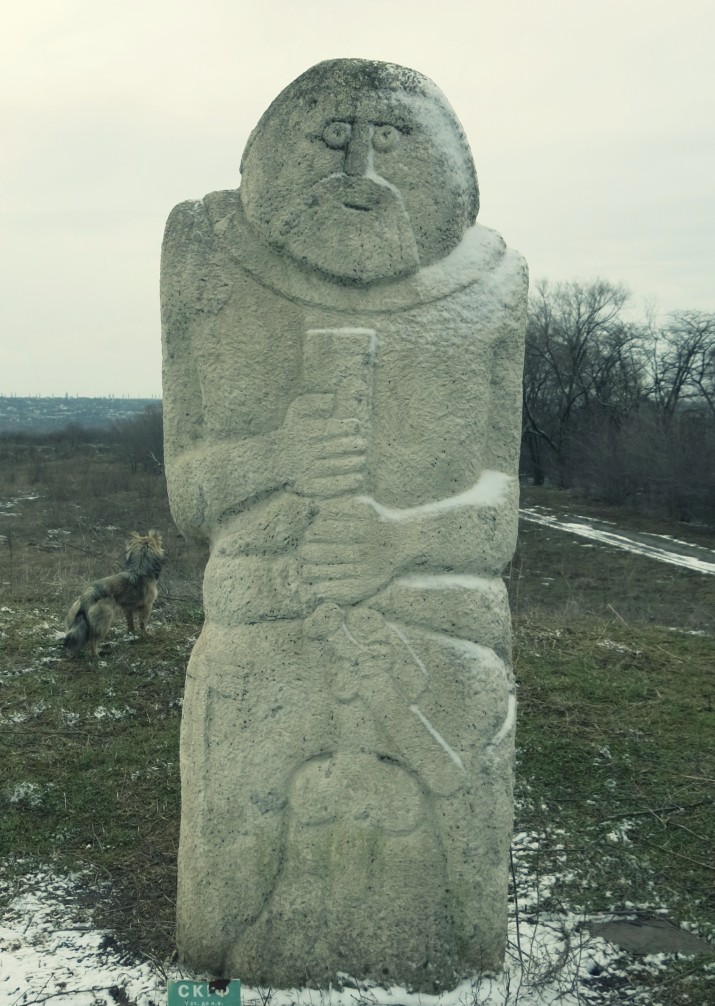
The ancestors of the modern Ukrainian people were called the Antes, a confederation of various Slavic tribes who settled the region in the mid-first millennium AD. The later outward migrations of the Antes people, partially in response to the invasion of the nomadic Avars, gave rise to a variety of new and distinct regional peoples broadly referred to as the East Slavs—several of whom are ancestral not only to the modern Ukrainians but to the modern Belarusians and Russians.
Kievan Rus’ (6-13th c. AD)
But the embryo of the modern state of Ukraine can best be traced to the later half of that millennium, with the establishment of a state now called Kievan Rus’. The origins of the word Rus’ are contested, though it may derive from Rhos, another name for the Swedes who were intimately tied to one of its ruling dynasties (more on this later). As the name also implies, this state was based around the city of Kyiv, which became one of the most important cities in all of Europe in the centuries following its establishment, serving as a pivotal link on the trade route from Byzantium to northern Europe, and remains to this day the capital of Ukraine.
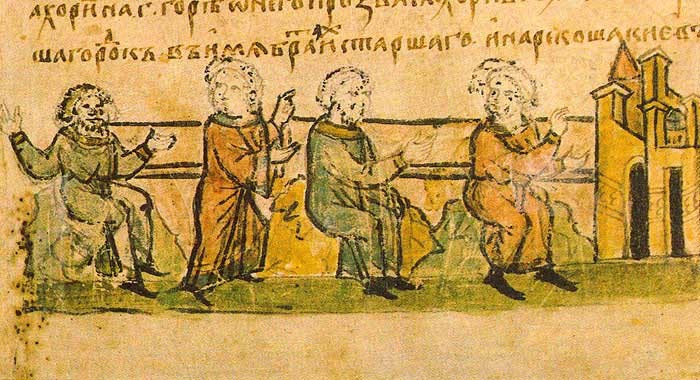
According to legend, Kyiv was founded by four siblings—brothers Kyi, Shchek, and Khoryv and sister Lybid—in the mid-first millennium AD. While archaeology cannot identify the founders by name, investigations have broadly backed up this time frame, meaning that Kyiv predates the foundation of the Russian capital of Moscow by at least five centuries, perhaps close to seven. Indeed, Moscow as a centre of power was only able to rise to prominence because of Kyiv’s eventual decline and sacking by the Mongols in the 13th century. Prior to this, Kyiv was the virtually undisputed centre of culture in Slavic lands, and in this age, Kievan Rus’ was the most powerful nation in eastern Europe, politically, economically, and culturally. At its peak in the 11th century, it was also the largest bordered state in all of Europe, a vast swath of land encompassing all or significant portions of the modern countries of Moldova, Belarus, Finland, Russia, and of course, Ukraine—which remained the beating cultural and political heart of the nation.
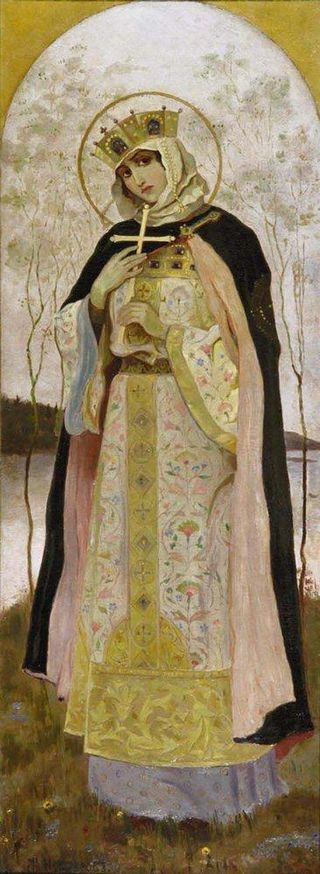
In its golden age, Kyiv was the seat of some of the most illustrious names in Slavic medieval history—for that matter, also in Scandinavian history, given that Kyiv’s major ruling dynasty, the Rurikids, had close ties to the Norse Varangians starting in the 9th c. This is not to say that the Rus’ were a Scandinavian people, of course, since these rulers assimilated wholeheartedly into the thriving native Slavic culture, and by the 10th c. they were well and truly Kievan. St Olga, Sviatoslav the Brave, Vladmir the Great, Yaroslav the Wise, Mstislav the Great, and Yuri Long Arm are just some of the heroic names to have ruled this powerful land from their seat in Kyiv. In the late 10th c., Vladmir the Great completed the so-called Baptism of Kyiv, converting the East Slavs to Eastern Orthodox Christianity and ushering in a new era. During the 12th c., in the latter days of Kievan Rus’, the word “Ukraine” itself appeared for the first time in writing, as the name of one of the southern regions of the state.
So pivotal is Kievan Rus’ in the history of Eastern Europe, that significant political propagandizing was carried out by numerous states in the early modern period, attempting to portray themselves as the “true” heirs to the Rus’.
Middle Ages and the Kingdom of Ruthenia (13-14th c.)
But all good things must come to an end, and Kievan Rus’ began to destabilise in the 12th c. due to regional power struggles. After the Mongol conquests tore the state apart in the 13th c., the Kingdom of Ruthenia was established from the pieces that remained in southwestern Ukraine. The first king of Ruthenia, Danylo I, consolidated the fragmented western Rus’ into this new state, including reclaiming Kyiv itself, though it was not to become the capital. Nonetheless, of the four cities ever to serve as the Ruthenian capital, three of them—Volodymyr, Halych, and Lviv—are located in Ukraine.
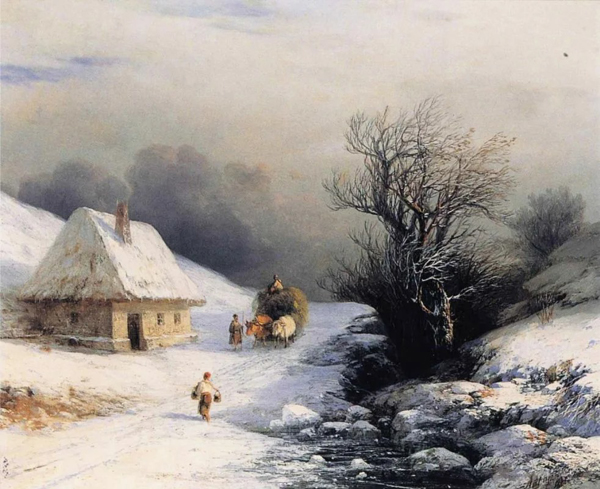
The Kingdom of Ruthenia, though heroic in effort, did not last long before being set upon by foreign powers. Poland and Lithuania, forming a new commonwealth, asserted control over the vast majority of the north and west from the 14th century onward. The Crimean Khanate, descended from the Mongolian Golden Horde that had invaded in the 13th c., held sway to the east and inflicted frequent raids on its western and northern neighbours. But despite the pressure from these powerful entities, the native peoples of central Ukraine stubbornly retained their own, indigenous identity; including the Ukrainian language, which first began evolving independently of Old Slavic in the 11th c.
The Cossack Hetmamate (15-18th c.)
As the Middle Ages drew to a close in the 15th c., another groundbreaking state arose in Ukraine: the Zaporozhian Cossacks. Much like the Scythians, the Cossacks were a loose confederation of self-declared independent communities scattered throughout the Eastern Slavic lands, composed to a large degree of peasants under the overlordship of Poland and Lithuania in the west, or the growing Duchy of Moscow, later Russian Empire, in the northeast. However, as these various Cossack groups—or “hosts”, as they were called—gained military power of their own, they began to more aggressively assert their independence against their neighbours, and more and more of the East Slavic peasantry, unhappy with foreign dominion, drew to their sides.
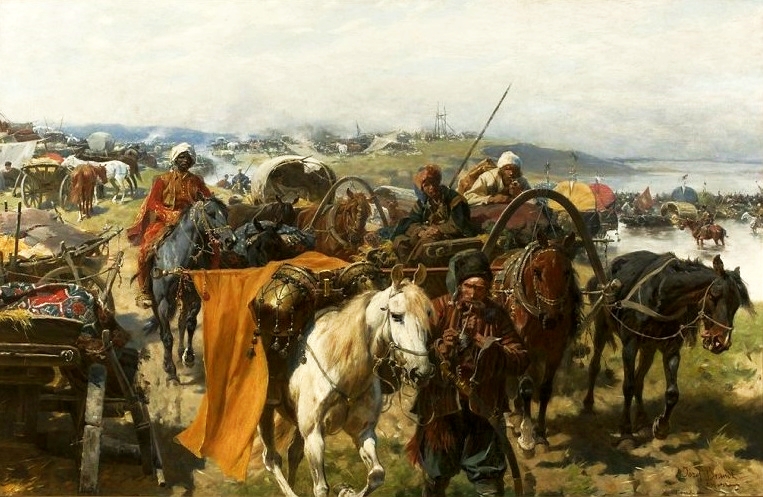
Looming large among the hosts were the Zaporozhian Cossacks, who rose to prominence in central Ukraine during the 15th century. Ukrainian Cossacks of all stripes rose up in rebellion against the Polish state in 1648, with the Zaporozhians at the helm, and a new and powerful military state called the Cossack Hetmanate, or Zaporozhian Sich, was born. The Cossacks claimed as their territory all of central Ukraine, and they entered into a treaty with the Russian Empire as a fully autonomous client state. This state is often regarded as the beginnings of the modern country of Ukraine, and whatever its political alliances, its culture was all indigenous.
Due to their growing military prowess, Cossack forces became coveted military allies for their larger neighbours—not only the Russian Empire, but also the Polish-Lithuanian Commonwealth and the Crimean Khanate. But after some generations of Cossack independence, the Tsars (rulers of Russia) began to assume more direct rule over the Cossacks. This culminated in 1775 when, on the orders of Empress Catherine the Great, Russia launched a military offensive into the region, seizing and dissolving the Hetmanate, subsuming its people into its own empire. With the annexation of the Crimean Khanate not long after, and the partitioning and of the Polish-Lithuanian Commonwealth, nearly all of the region now encompassing Ukraine came under imperial Russian control for the first time in the early 19th century.
Russian imperialism and Soviet Union (1775–1991)
As a subject of the Russian Empire, Ukraine was initially allowed to retain much of its identity, and a Ukrainian national romantic movement flourished from the mid-19th century onward. However, this came under severe pressure from later Russian rulers and their governments, who attempted to quash indigenous culture and went so far as to ban the use of the Ukrainian language—an all-too-common tactic of oppressive powers in the Imperial Era. After the Bolshevik Revolution of 1917 ended the Russian Empire, a Ukrainian independence movement began at once, initiating a war of independence that lasted until 1921 with the foundation of the Ukrainian Soviet Socialist Republic. This was one of the founding states of the USSR, but troubled times were ahead. In the early 1930s, a devastating famine called Holodomor struck the USSR, and no Soviet republic suffered more than Ukraine—of the millions who perished, probably three quarters of them were Ukrainians.
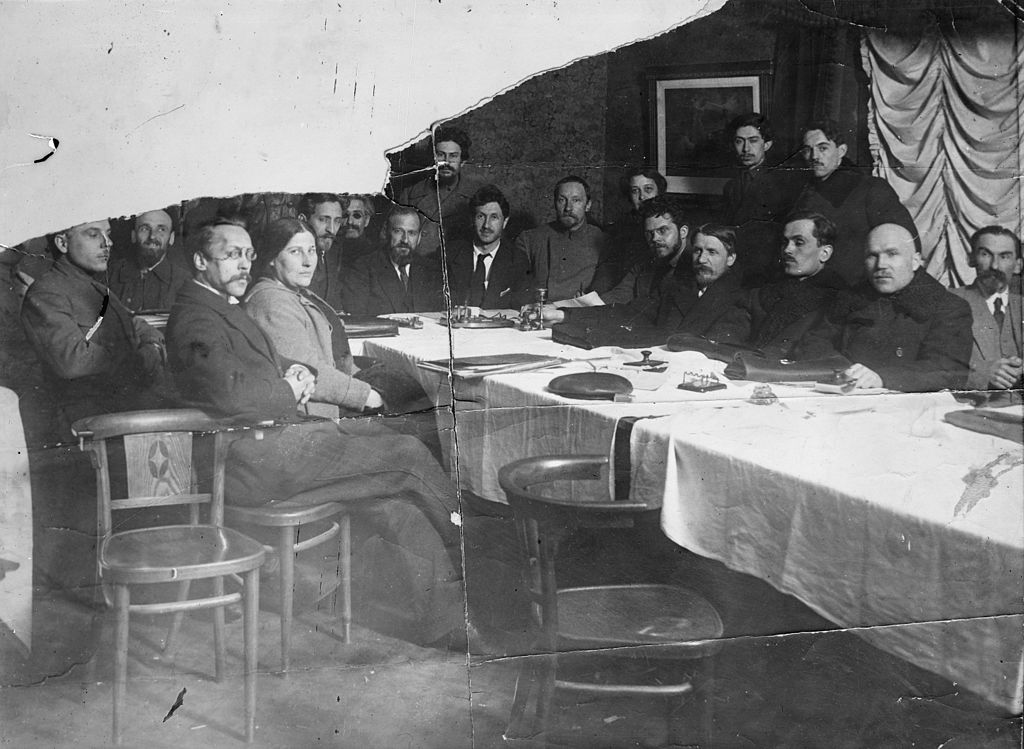
After this, coerced Russification efforts began afresh and only intensified after the Second World War. But despite the repeated repressions of the Russian Soviet government, Ukrainian nationalism—with its distinct indigenous culture and character—never faltered, even in the face of forced relocations of its populace. The Ukrainian people were irrepressibly proud then, just as they are now, of their heritage—and stood up bravely against attempts to eradicate it.
Ukraine remained behind the Iron Curtain until the fall of the Soviet Union in 1991. In that year, Ukraine became an independent sovereign nation.
Independence and invasion (1991-2022)
After an initial downturn, Ukraine began to rebound economically and blossomed into a western-style market economy. Over the next several decades, as the gulf between Europe and Russia widened, Ukraine began to lean more towards their neighbours to the west. Membership in the European Union and North Atlantic Treaty Alliance became popular goals among most of the people.
In 2014, Russia annexed Crimea, initiating the Russo-Ukrainian War.
In 2022, Ukraine is suffering a full-fledged Russian invasion with all the overtones of a war of conquest.
What lies ahead for the nation of Ukraine and the Ukrainian people is currently frighteningly unclear. But the scenes of brave resistance that we have seen in the days since Russia’s invasion are part of a long and storied history of Ukrainian cultural pride. While the images coming from the country are devastating, it is also inspiring to witness the refusal of a people to surrender their heritage, their identity, and their independence in the face of oppressive force.
We at Scandinavian Archaeology stand firmly with the nation of Ukraine and its people. We will support them in any and all efforts to safeguard their history, heritage, and lives. And, like all others, we wish for a swift end to the unconscionable horror that has been inflicted on them—a swift end which leaves them free and independent.
We also want to remind you to be critiqual of what you read online. A lot of false information, news, pictures, and videos is already circulating and it is therefore of utter importance you keep your critical thinking sharp.
Another thing we wish you to keep in mind this is not a reflection of the Russian people of many is protesting. Be kind towards each other – the world is already facing too much hatred as it is.
Text: Christopher Nichols. Copyright 2022 Scandinavian Archaeology.
Cover Photo: Kyi, Shchek, Khoriv and Lybid found the city of Kyiv. Unknown painter. Wikipedia.
About the author
Archaeologist with a Bachelor of Arts from Simon Fraser University (Vancouver, Canada) and a Master of Arts from Uppsala University (Uppsala, Sweden). My specialisation lies in bioarchaeology broadly, with a primary focus on mammalian zooarchaeology, and a special interest in the Late Iron Age of Scandinavia (though you can occasionally catch me sniffing around Egypt as well).
In my Master research I conducted an osteological analysis of domestic dog remains from Valsgärde cemetery, Sweden. The aims were to identify the number of dogs buried at the site, reconstruct the appearance of the dogs, and identify any patterns and changes between the Vendel Period and Viking Age.
I’ve always been fascinated by the relationship between humans and animals, domestic and wild, in societies throughout the world. Through archaeology, I hope to shed light on this crucial part of our shared heritage.
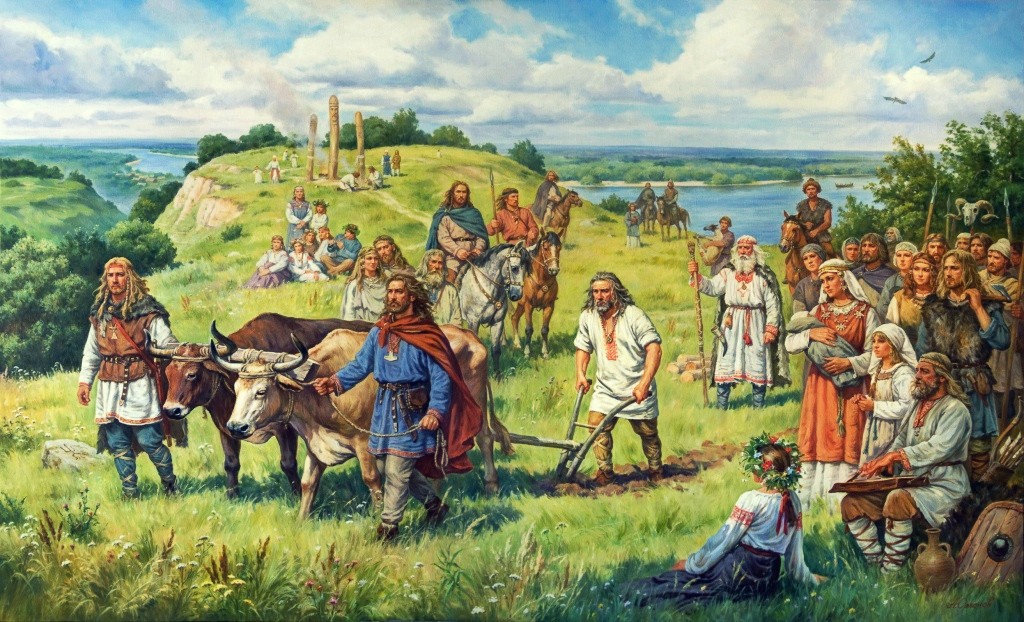

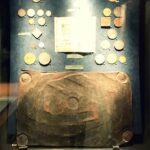
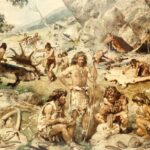
I support Ukraine 100%. Thank you for taking the time to divert from your normal work to create this important account of Ukraine’s history. I found it much easier to read, than some of the more in-depth articles I have read in pursuit of the true history of Ukraine. I will share this article to my f/b page and groups in the hope that people will take the time to educate themselves instead of jumping on bandwagons of misinformation.
This information is very paramount. It strengthened the support for Ukraine.
Very well done .I am from Australia and ny great grandfather was from Foglo,Aland Islands. They had a history of Russian incursions also many years ago.
Thanks for the post and all the information. What an amazing country.
Thank you for this. Ukraine is proving itself to be the bravest of the brave.
As are the Russian people protesting this lunacy.
Power to you all. ❤️?